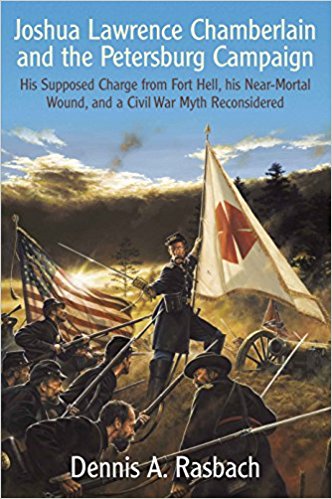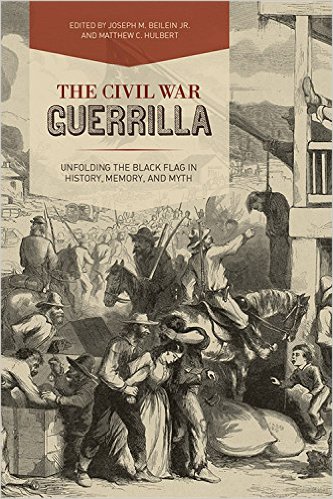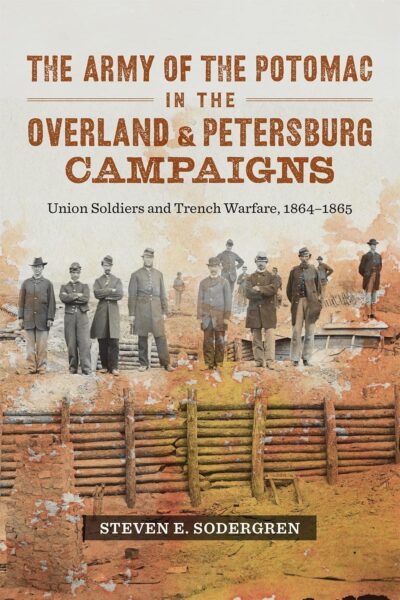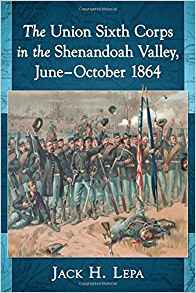Joshua Lawrence Chamberlain and the Petersburg Campaign: His Supposed Charge from Fort Hell, his Near-Mortal Wounding, and a Civil War Myth Reconsidered by Dennis A. Rasbach. Savas Beatie, 2016. Hardcover, ISBN: 978-1-61121-306-5. $29.95.
 Joshua Chamberlain is the focus of much controversy. The professor-turned-soldier from Maine is most famous for his defense of Little Round Top and counterattack down its slopes, though a number of historians question Chamberlain’s role in actually ordering the bayonet charge and other details of the fight. Perhaps second to Little Round Top in the Chamberlain legend is his June 18, 1864, attack at Petersburg, in which Chamberlain, sword in one hand and brigade flag in the other, was shot through the pelvis. Most everyone pronounced the wound mortal, prompting U. S. Grant to issue him a battlefield promotion to brigadier general, but Chamberlain lived on another fifty years before dying from complications related to the old injury. This latter action is the subject of Joshua Lawrence Chamberlain and the Petersburg Campaign, in which Dennis A. Rasbach argues that Chamberlain misidentified the location of this assault in his postwar writing; the author relocates the site almost a mile northward.
Joshua Chamberlain is the focus of much controversy. The professor-turned-soldier from Maine is most famous for his defense of Little Round Top and counterattack down its slopes, though a number of historians question Chamberlain’s role in actually ordering the bayonet charge and other details of the fight. Perhaps second to Little Round Top in the Chamberlain legend is his June 18, 1864, attack at Petersburg, in which Chamberlain, sword in one hand and brigade flag in the other, was shot through the pelvis. Most everyone pronounced the wound mortal, prompting U. S. Grant to issue him a battlefield promotion to brigadier general, but Chamberlain lived on another fifty years before dying from complications related to the old injury. This latter action is the subject of Joshua Lawrence Chamberlain and the Petersburg Campaign, in which Dennis A. Rasbach argues that Chamberlain misidentified the location of this assault in his postwar writing; the author relocates the site almost a mile northward.
There are two competing theories for the location of Chamberlain’s attack and near-fatal wounding. Chamberlain’s accounts place his brigade far to the south of the rest of 1st Division, 5th Corps on the Jerusalem Plank Road, approaching a portion of the Confederate line known as Rives’ Salient. During the subsequent trench warfare around Petersburg, this sector was one of the closest points between the opposing lines, with Union troops nicknaming their position “Fort Hell” and the rebel defenders in turn dubbing their post “Fort Damnation.” Chamberlain would play up on this sector’s notoriety to poetic effect in his reminiscences. Conversely, Rasbach contends that Chamberlain’s brigade attacked astride the Baxter Road toward Pegram’s Salient, advancing alongside other 1st Division brigades. As Rasbach observes, most Chamberlain biographers have repeated his Jerusalem Plank Road scenario, which places the brigade strangely isolated from the rest of the division; scholars of the Petersburg Campaign, on the other hand, have traditionally adhered to the more conventional Baxter Road scenario for which he advocates.
Rasbach assembles a copious body of evidence from Union and Confederate sources to make a convincing case that Chamberlain and his brigade fought over a different portion of ground than the Union hero identified in postwar reminiscences. Perhaps most convincingly, he identifies nine different details from Chamberlain’s own accounts regarding terrain and nearby units, then systematically argues that Chamberlain’s own words support the Baxter Road scenario, not a Jerusalem Plank Road approach.
Good maps are essential to a detailed battlefield study such as this, and Joshua Lawrence Chamberlain and the Petersburg Campaign does not disappoint. In addition to period and modern photographs, the book boasts more than 20 detailed maps by Hal Jespersen (whose excellent work readers may recognize from Civil War entries on Wikipedia). These maps not only help readers understand the events of June 18, but also bolster Rasbach’s argument. Fittingly, the author pays generous tribute to his cartographer in the text. Additionally, the book makes sophisticated use of modern topographical technology to further make its case.
Rasbach writes that his book concerns “the whereabouts of a single brigade, in a single engagement, on a single day of the Civil War” (153). As such, readers might find the question to be purely academic, as the answer does not necessarily have earth-shattering consequences for Chamberlain’s reputation or legacy. Instead, the author presents Chamberlain as “an intelligent, honorable[,] and reliable man” who was honestly and understandably mistaken in his effort to reconstruct a particular battle (1). While the implications might not seem especially weighty, Rasbach does in fact draw important historical lessons from the Chamberlain at Petersburg controversy—presenting his key findings as an example of historians (in this case, primarily Chamberlain biographers) uncritically relying on the same set of sources without evaluating all available evidence for themselves.
Oddly, Rasbach might have overly downplayed the level of controversy behind the Chamberlain at Petersburg debate. He does recount how his evidence led to moving a historical marker honoring Chamberlain’s wounding and promotion. In the book’s afterword, Rasbach reports in a few short paragraphs that the move resulted in “a wail of protest” (175), but he unfortunately does not provide much more detail in terms of who spoke out and why. Perhaps Rasbach believed he was taking the high road by not interrogating in print those with whom he disagrees, but in a time when the memory of the Civil War is a well-established subject of inquiry, it would have added to the book’s depth had he elaborated on just why the location of Chamberlain’s attack can stir passions today.
Joshua Lawrence Chamberlain and the Petersburg Campaign represents a skillfully argued, thoroughly researched examination of a critical episode in a Civil War hero’s military career. Admirers of Chamberlain and students of the Petersburg Campaign should absolutely consider this an important contribution. For other Civil War readers, Rasbach’s work offers compelling questions about how we reconstruct the past—and what we think we know about history.
Jonathan M. Steplyk received his Ph.D. in History at Texas Christian University and teaches as an adjunct instructor at both Texas Christian University and the University of Texas at Arlington.




